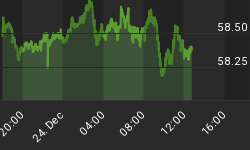Fed Backed Into Low Rate Corner
The Fed has taken extreme measures to kick start the economy. With fears of inflating another round of asset bubbles increasing, public statements from Fed governors in recent weeks have revolved around tapering their stimulative policies in the months ahead. As Bloomberg noted, the tapering script was still in use last week:
"I would clearly not rule" out a decision to start dialing back the purchases at the Sept. 17-18 gathering of the Federal Open Market Committee, Chicago Fed President Charles Evans said on Aug. 6. "We've seen good improvement in the labor market, there's no question in my mind about that."

The financial markets are not sending "we are ready to take over for the Fed" signals despite three rounds of quantitative easing (QE). The Fed has to be disappointed with the results of their money printing experiment.
Fed Handoff To Markets and Economy In Doubt
As we noted on July 19, one of the objectives of the Fed's bond buying campaign is to stimulate the economy as follows:

The hoped for end game with printing money to create the wealth effect is to allow the Fed to eventually pass the economic torch to private investment and the broader economy. Since bringing the topic of tapering to the forefront in late May, the financial markets have hinted they are not ready to carry the torch alone yet.
Slowing Momentum Reflects Uncertainty
If the financial markets were confident about the economy and outlook for Fed policy, we would expect to see positive momentum in stock prices. That is not what we have currently. Traders commonly use indicators, such as MACD below, to monitor bullish and bearish momentum. Momentum tends to favor the bulls when the black MACD line is above the red MACD line. Conversely, bearish odds become more favorable when MACD black drops below red, as it did in October 2012 and May 2013. Thus far, the bulls have been unable to recapture the Dow's weekly momentum (blue arrow), which means we need to keep an open mind about additional weakness in stocks.

Fed Still Wants Low Rates
The stock market's intermediate-term outlook is highly dependent on how investors interpret recent Fed signals:
Interpretation A: The Fed's tapering means QE will end soon. The end of QE means higher interest rates, which could be a drag on stocks and the economy.
Interpretation B: The Fed has no intention of withdrawing support for the economy and markets. They still intend to keep interest rates low for an extended period, which is good for stocks.
Bond buyers did test the waters a bit last week. If that continues, it could tip the scales toward Scenario B above. From Bloomberg:
"The Fed did a good job in convincing the market that tapering isn't necessarily tightening," Ashish Shah, the head of global credit at AllianceBernstein Holding LP, which manages $435 billion in assets, said in a telephone interview. "The stability we're seeing in Treasuries is helping people come back into the market to find pretty attractive yields.
Bears Have The Ball - Can They Get Across Midfield?
Our market model tracks the market's technical health on numerous time frames. As outlined in this week's video, the model is telling us the bulls remain in control of weekly trends, but the bears have taken back the market's short-term momentum, based primarily on tapering fears.

Investment Implications
The market model helps us discern between "volatility to ignore" and "volatility that requires some defensive action". As shown in the weekly chart of the NASDAQ below, the short-term bearish momentum has yet to significantly impact the bullish weekly trends.

Until last week, it was relatively easy to hold on to our long positions in the broad market (SPY), financials (XLF), technology (QQQ), mid caps (MDY), and small caps (IWM). If market weakness carries into a second week, the odds are very good our model will call for some incremental risk reduction (cutting back on longs). We will enter the week with a patient, watchful, and flexible eye.
















